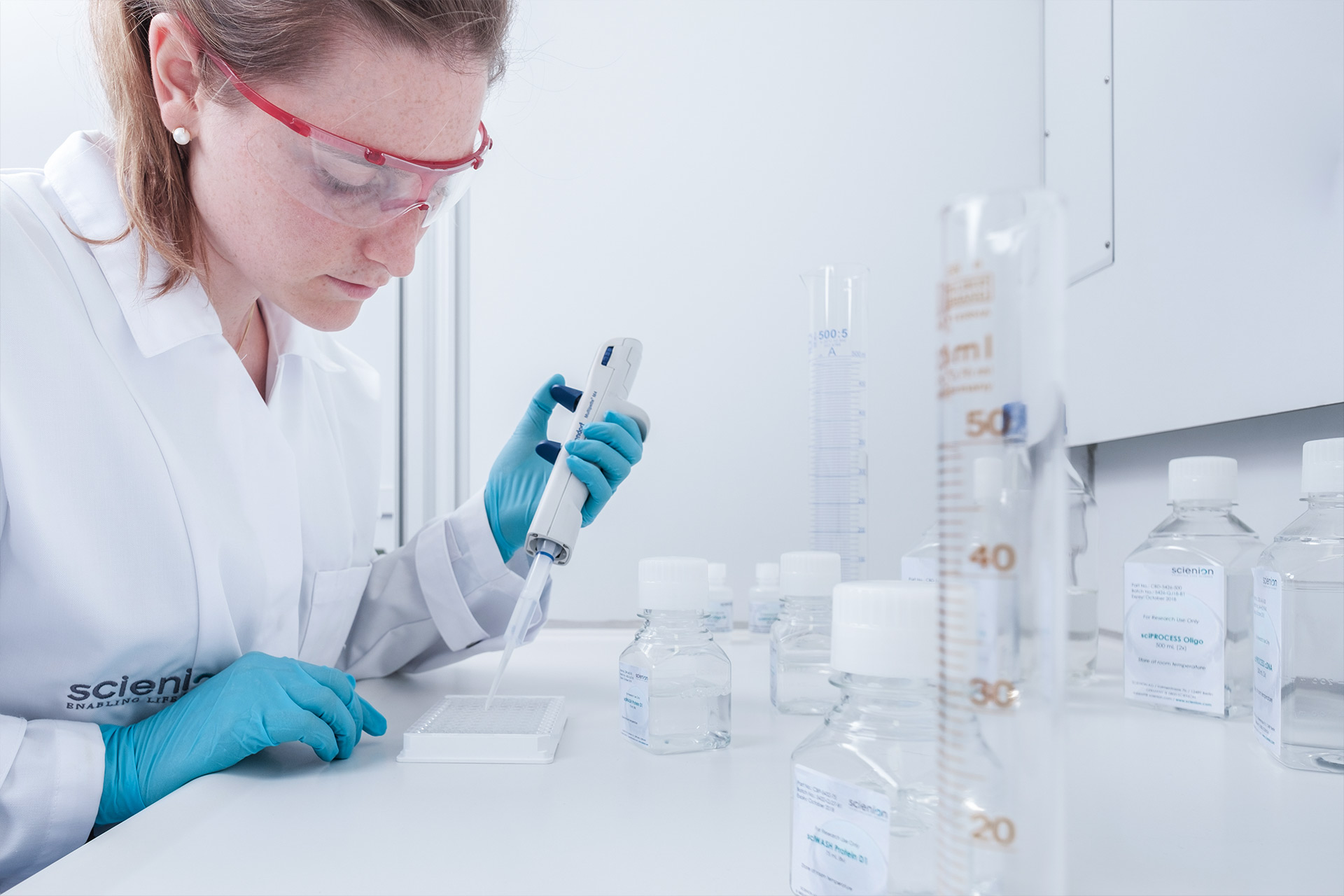A Step-by-Step Guide to SCIENION’s Feasibility Evaluation

At SCIENION, we’re committed to providing you with the tools and resources you need to achieve your application goals. That’s why we offer an initial application feasibility study at no charge to help you get started.
In this post, we’ll walk you through the process of requesting the feasibility study and what you can expect from our expert team.
Fill out our demo form
To get started, simply click on the “Request a demo” button on our website. This will direct you to a form with a few simple questions. While some answers are mandatory, we can figure out the rest as we go. Let’s take a closer look at what information would be useful.
Choose your samples, substrate, and print layout
In a perfect case, you’ll have already decided on the samples to be dispensed, substrate type, and print layout. Here’s what you need to know about each:
- Print sample: Most likely, your samples will contain capture probes to be immobilized on a substrate, coat microstructures like microneedles or to fill tiny vials or channels of microfluidic devices. We can dispense DNA and oligonucleotides, antibodies, proteins, glycans, nanoparticles, quantum dots, and more.
- Number of print samples: Within our free demo printing, we can dispense up to 10 various samples.
- Number of replicates: Each sample can be represented by a single spot, or you can choose to print in multiples (duplicates or triplicates).
- Number of arrays: Some substrates will dictate the number of arrays and the locations to be dispensed, but in others, it can be specified according to your application objectives.
- Desired drop volume: SCIENION has several dispense technologies that support a dynamic dispense range from low picoliters to low microliters.
- Desired spot size: This will be a result of many parameters such as the substrate or functionalization, or the environment. We will help you achieve the expected spot size on your substrate.
- Print layout/pattern: 3×3, 5×5, 12×12, or an arbitrary pattern? We will achieve your desired layout in the shortest possible time.
- Pre- and post-processing: How should your print samples be stored? Does you substrate require surface activation? Should we perform a blocking step after dispensing? Let us know how to handle your samples and substrates properly.
Schedule a call with our scientists
If you’re still unsure about the right approach – don’t worry. After a quick call with one of our scientists, you will gain much more clarity. So regardless of where you are today, schedule a call with our team to discuss your application.
Receive your demo report
After test printing, you’ll receive a demo report describing the materials, methods, and conditions applied during work with your samples. This report will help you evaluate the performance of your printing and guide your next steps.
Explore our product portfolio
At SCIENION, we work with a variety of support formats, including glass or polymer slides, 96-well plates, biosensors, microfluidic cartridges, membranes, microneedle patches, and more. If you’re not sure which format is the best choice for you, we can start by printing on the substrates that you’ll find in SCIENION’s product portfolio. Try out our glass and polymer slides (sciCHIPs) or 96-well plates optimized for microarray printing (sciPLEXPLATEs) and consider colorimetric or fluorescence-based readout with the sciREADER.
